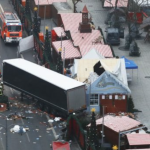Since last May 20, 2023, the southwestern part of the country has faced a contingency due to the problems that have arisen in the supply of natural gas, this as a result of a thermal anomaly registered in the Cerro Bravo volcano, in Tolima, and which led to the operational closure of the Mariquita-Cali gas pipeline.
Given this scenario, the working group, made up of the Ministry of Mines and Energy, national and territorial authorities and companies in the natural gas sector, announced that progress is being made in adopting measures to mitigate the impact of the crisis.
(See: Alternative pipeline and LPG, among alternatives to bring gas to the south).
The Ministry of Mines and Energy indicated, through a statement, that “It advances with the review of alternatives to enable the supply of this energy in the shortest possible time, under constant review, safeguarding the integrity of the population and the gas infrastructure of this part of the country”.
The entity also guaranteed the supply of natural gas and indicated that there is no shortage.
Likewise, he informed that the evaluation works of the infrastructure and the laying of a line in flexible tubing are being carried out, which will allow having the gas transportation capacity required to meet the demand of residential, industrial and vehicular users.
(See: Neither gas nor oil: the true enemy of climate change).
gas plant.
Jaime Moreno / THE TIME
The Government and business action plan
Among the points that have been implemented during the emergency, it is mentioned that Transportadora de Gas Internacional (TGI) is conducting a review of the state of the current pipeline to verify that the high temperatures have not affected the integrity of the infrastructure and advances in the bypass construction work with flexible tubing, complying with the established schedules.
According to information shared by the Government, “This solution would take at least 7 more days, while external conditions and the evolution of the thermal anomaly allow it.” Last Monday, May 22, they had said that the work would take 9 days.
(See: The SGC explained what happens with the Cerro Bravo volcano and its gases).
In addition, the Colombian Petroleum Institute (ICP) will develop a geoelectric study to define the depth of the layer that is being incinerated and what materials would be causing the emergency.
BRIEFCASE












